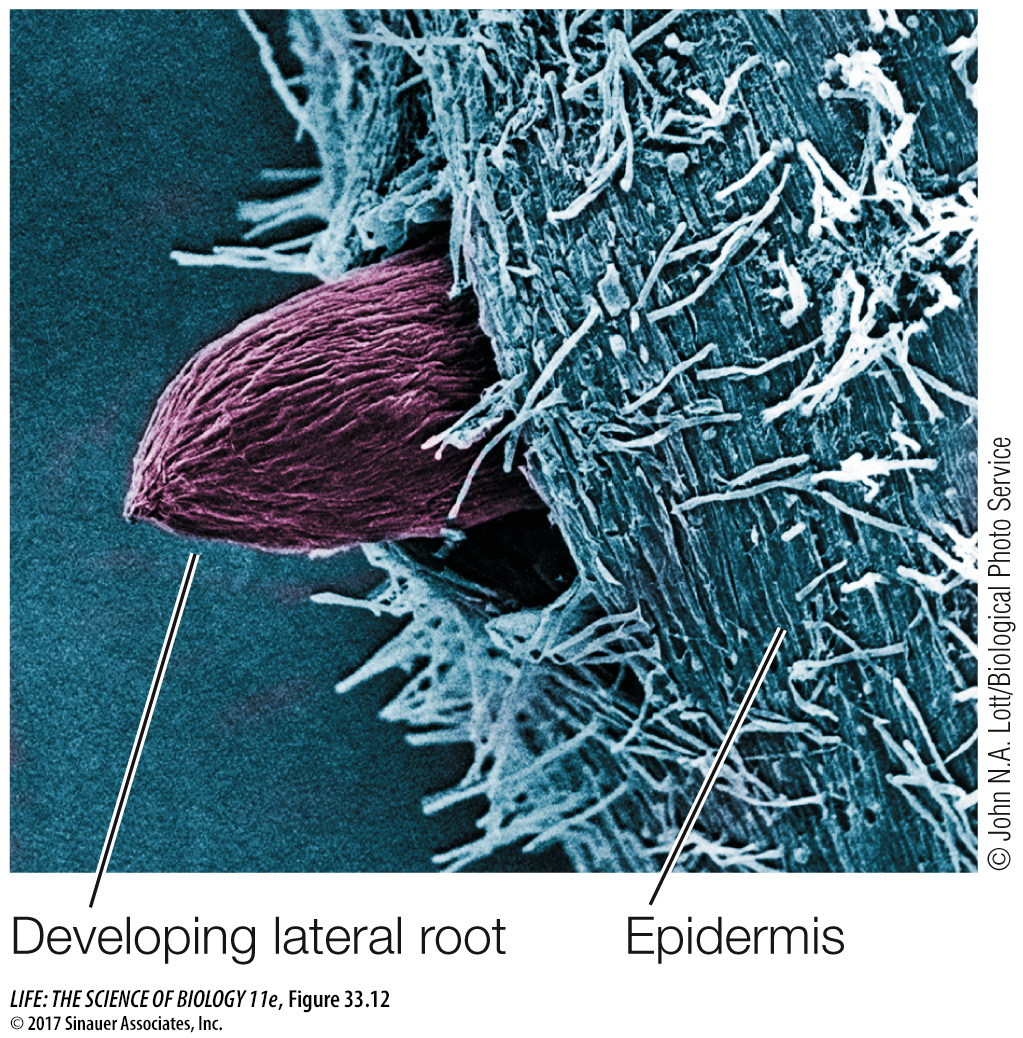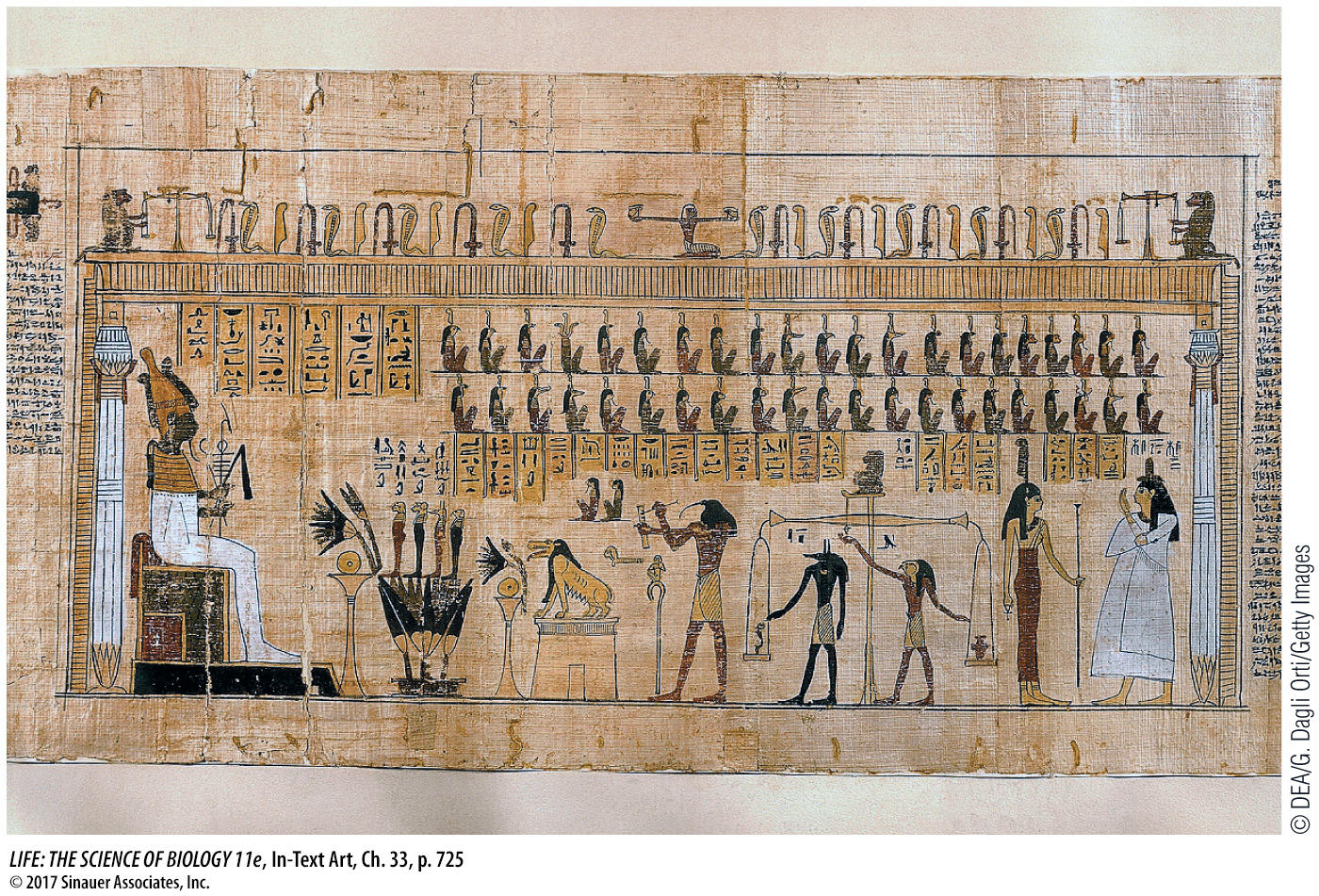The products of the root’s primary meristems become root tissues
The products of the three primary meristems (the protoderm, ground meristem, and procambium) are the tissue systems of the mature root. The differing arrangement of the three tissue systems in the roots of eudicots and monocots is one of the ways in which the two clades are distinguished (Figure 33.11).

Activity 33.1 Eudicot Root
www.life11e.com/
Activity 33.2 Monocot Root
www.life11e.com/
The protoderm produces the epidermis, the outer layer of cells that is adapted for protection of the root and absorption of mineral ions and water. Many of the epidermal cells produce long, delicate root hairs, which vastly increase the surface area of the root (Figure 33.10B). Root hairs grow out among the soil particles, probing nooks and crannies and taking up water and minerals.
The cortex is a region of ground tissue produced internal to the epidermis by the ground meristem. The cells of the multilayered cortex have various functions, including storage.
The endodermis is the innermost layer of the cortex. Unlike other cortical cells, the endodermal cells contain a waterproof substance called suberin in their primary cell walls. The suberin forms a cylindrical ring around the inside of the endodermis, which allows the endodermal cells to control the movement of water and dissolved mineral ions into and out of the vascular tissue system.
725
Inner to the endodermis is the vascular cylinder, or stele, produced by the procambium. The stele consists of three tissues: pericycle, xylem, and phloem. The pericycle consists of one or more layers of relatively undifferentiated cells. It has three important functions: (1) It is the tissue within which lateral roots arise (Figure 33.12). (2) It can contribute to secondary growth by giving rise to lateral meristems that thicken the root. (3) Its cells contain membrane transport proteins that export nutrient ions into the cells of the xylem.

Question
Q: How does totipotency relate to lateral root formation?
Pericycle cells are differentiated yet totipotent, and can dedifferentiate to give rise to all cell types of the root.
At the very center of the root of a eudicot lies the xylem. Seen in cross section, it typically has the shape of a star with a variable number of points (see Figure 33.11A). Between the points are bundles of phloem. In monocots, a region of parenchyma cells called the pith typically lies in the center of the root, surrounded by xylem and phloem (see Figure 33.11B). Pith, which often stores carbohydrate reserves, is also found in the stems of both eudicots and monocots. Strips of pith of the stem of the papyrus plant Cyperus papyrus can be glued together and used to make a paperlike substance called by its species name. Papyrus dates from earlier than 2500 B.C.E. in Egypt, and was the writing surface of choice until about 300 C.E., when parchment from animal skins replaced it.
